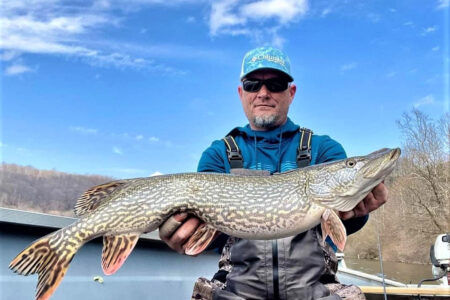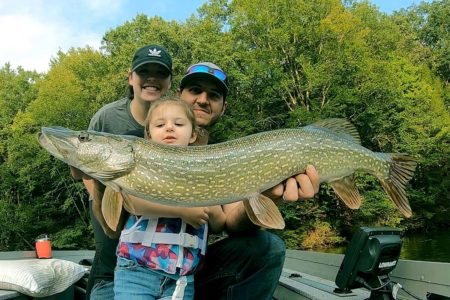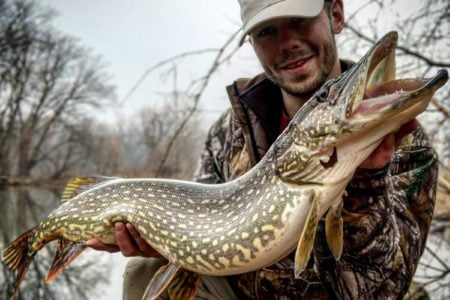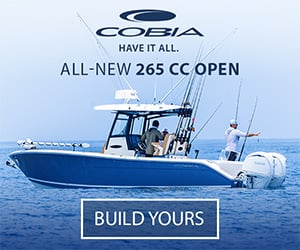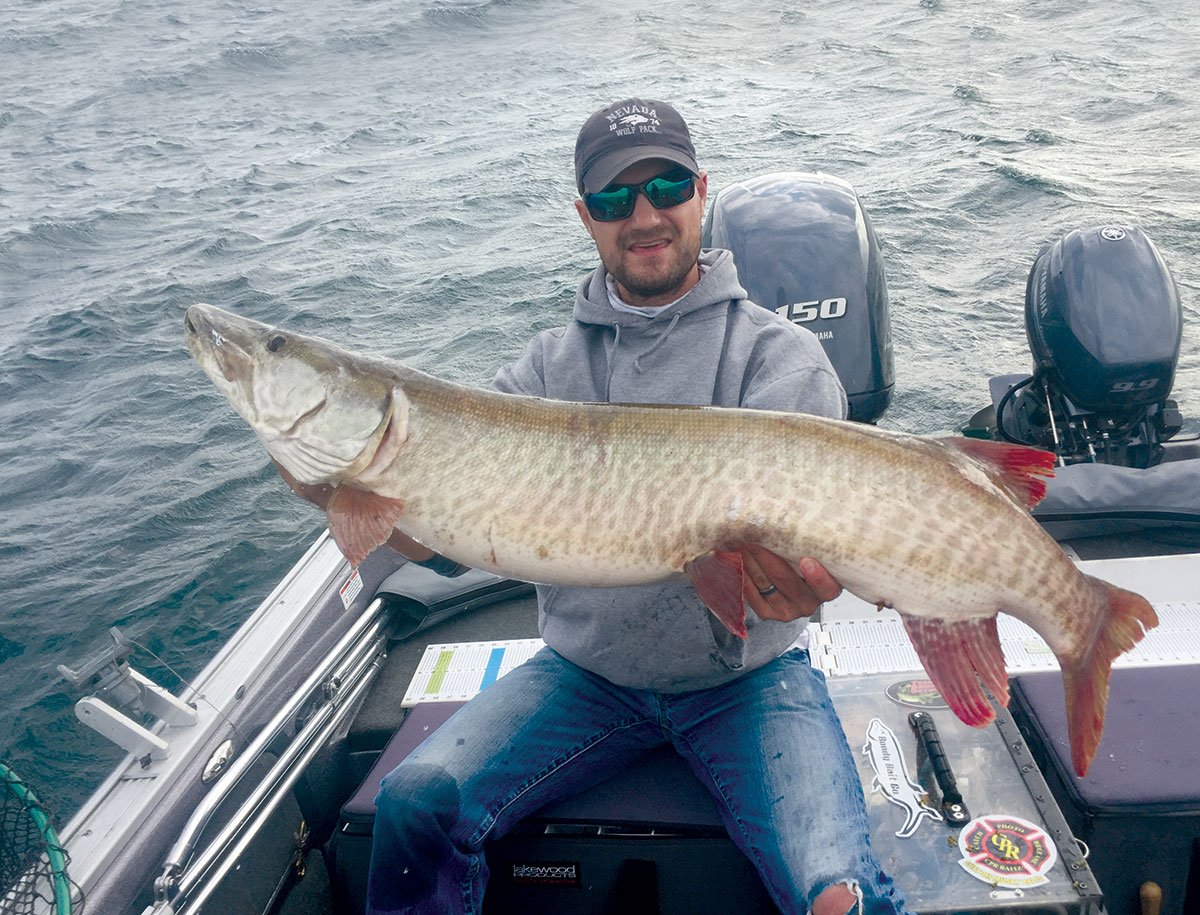
The Northeast offers plenty of places to tangle with freshwater’s ultimate predator.
No freshwater fish is more fabled than the muskellunge. The “Fish of 10,000 Casts” is a bucket list species for many anglers, and often one that never gets checked-off. The most essential key to catching a musky is finding them, and that all starts with identifying a body of water which has enough fish of catchable size to give you a decent shot. Thirty years ago, this article would be limited to the lakes and waterways in northern Minnesota and Ontario, but today musky fishing is a much different story.
Between stocking efforts and cleaner water, several states in the Northeast boast trophy musky fisheries, and even more waters in our region are developing fisheries rapidly. New York, New Jersey and Pennsylvania all have numerous quality musky fisheries, while Connecticut and Massachusetts are seeing a revival of their tiger musky stocking efforts and showing promise for the very near future.
Like most things that are worth doing in life, musky fishing takes a little time. Doing your homework, investing in the right tackle, practicing and spending time on the water will ultimately lead you to continued success. I can’t do all of those things for you, but maybe I can help you get started on the homework.
Casting Vs Trolling
There are two distinct schools of thought among the musky community, the “casters” and the “trollers.” While it’s not necessary to know all the pros and cons of each, it is beneficial to decide if you have preference for one of these tactics. Sticking to one approach will help you learn it thoroughly, and as both require slightly different tackle it’ll save you a few bucks as well. The decision whether to cast or troll comes down to personal preference.
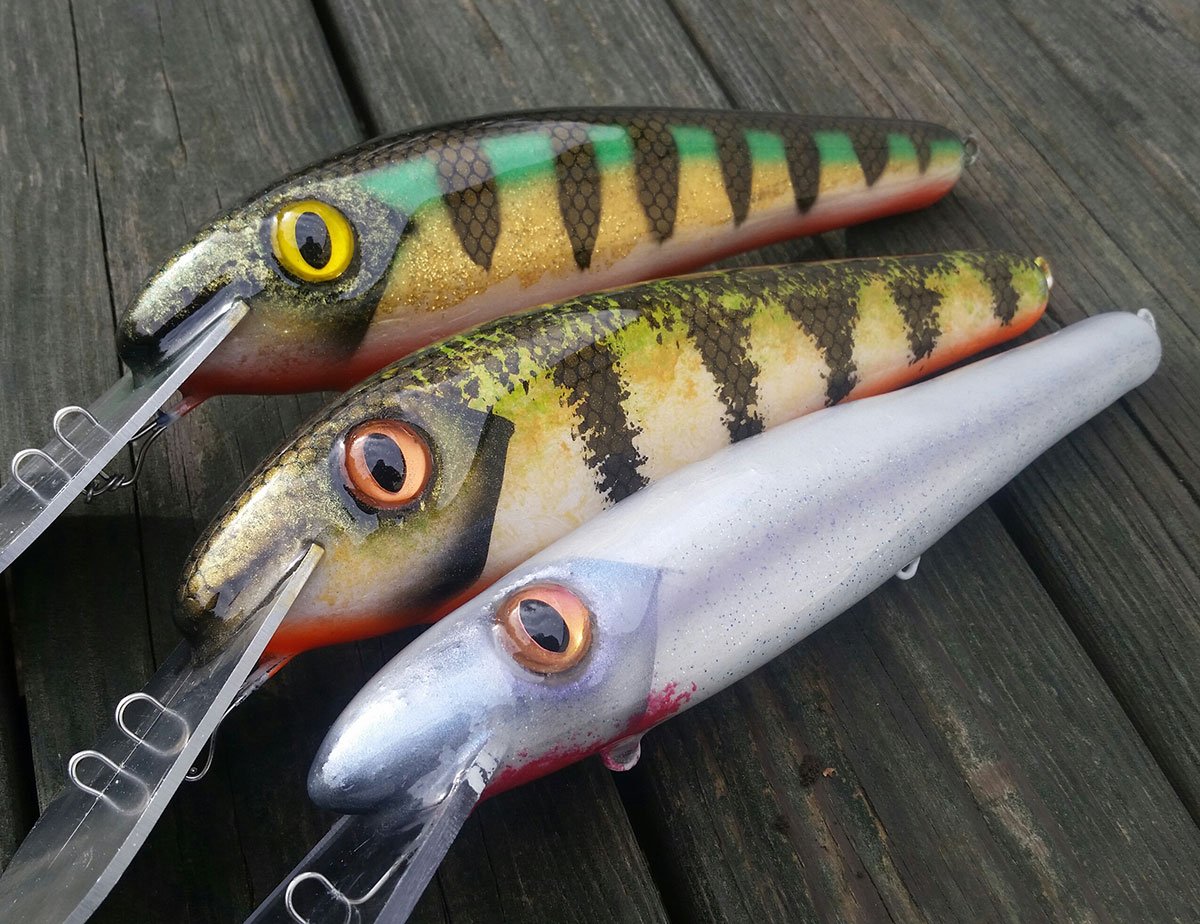
Casting for muskies is taxing and throwing baits that can weigh as much as a pound on heavy gear for long hours certainly isn’t for everyone. But for some anglers, like me, it is preferable to sitting still long enough to give trolling an honest effort. Other anglers prefer toying with the depths at which their baits are running and keeping their eyes glued to electronics as they try to elicit a bite. Regardless of the time of year, both methods catch fish if done properly.
Gearing Up
Fishing for muskies necessitates gear that you would associate more with saltwater tactics. Sturdy rods, strong reels and heavy braided line are the norm here. Selecting a rod, or two, begins with whether you prefer to cast or troll. There is a wide array of options for each to cover every price point. One of the biggest differences comes in the material of the rod. Anglers casting for muskies almost always use graphite rods, where trollers often utilize fiberglass rods or composites.
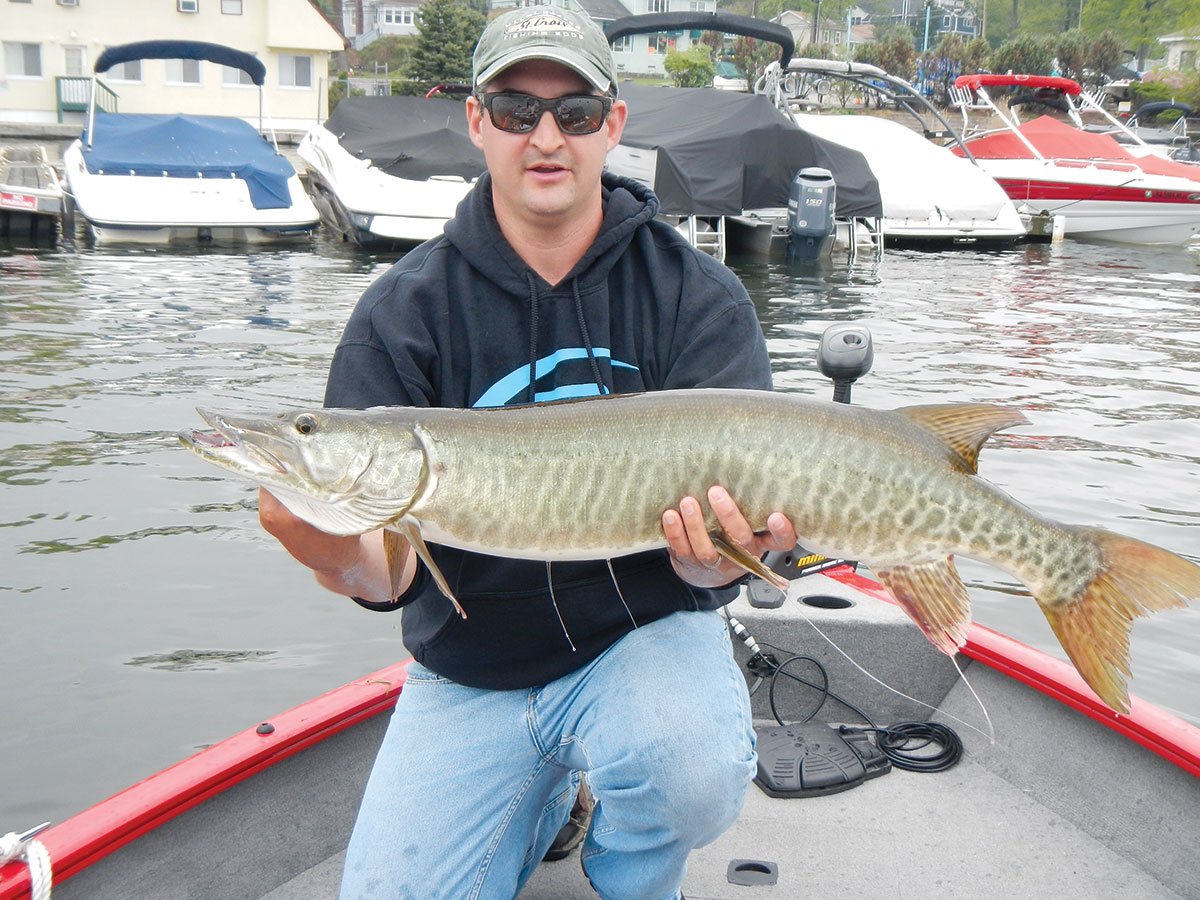
The strength, power and responsiveness of a quality graphite rod are the keys for casting big musky lures and driving hooks home. Rod lengths can vary from 7 feet all the way up to 9-1/2 feet depending on personal preference. You don’t need to break the bank either. Okuma’s new EVX B musky rod is a steal for $120. If you have money to burn, St. Croix makes impressive rods that top $300 and $500. Shimano reels like the Tranx are pricier and worth it for devoted musky anglers, but the venerable Abu Garcia C4 is moderately priced and of good quality for the beginner. When choosing line, spool with 80- to 100-pound braid like Power Pro.
Trolling rods for musky are a much different story. Moderate-action fiberglass gives more life to trolling baits and absorbs the shock of a musky hitting at 4 to 6 mph an hour. Trolling can be rough on a rod, so breaking a $30 stick is much more palatable than a $300 rod snapping should you hit a snag. Surprisingly, one of the most popular trolling rods for musky is Shimano’s $29.99 TDR, which will probably cost you less than the boat launch fee. Line counter reels are musts, as most lures will let you know how deep they run with difference lengths of line out. The Daiwa Sealines and Shimano Tekotas are very popular depending on your price point. Once again, 80- to 100-pound Power Pro does the trick.
Aside from a quality rod and reel, proper release tools and a large musky net are imperative. The net should be a “pen type” like the Frabill Power Catch, which allows you to keep the musky in the water while you unhook it. Release tools include a jaw spreader, a pair of long needle-nose pliers and a pair of mini-bolt cutters to snip hooks should they be too difficult to remove.
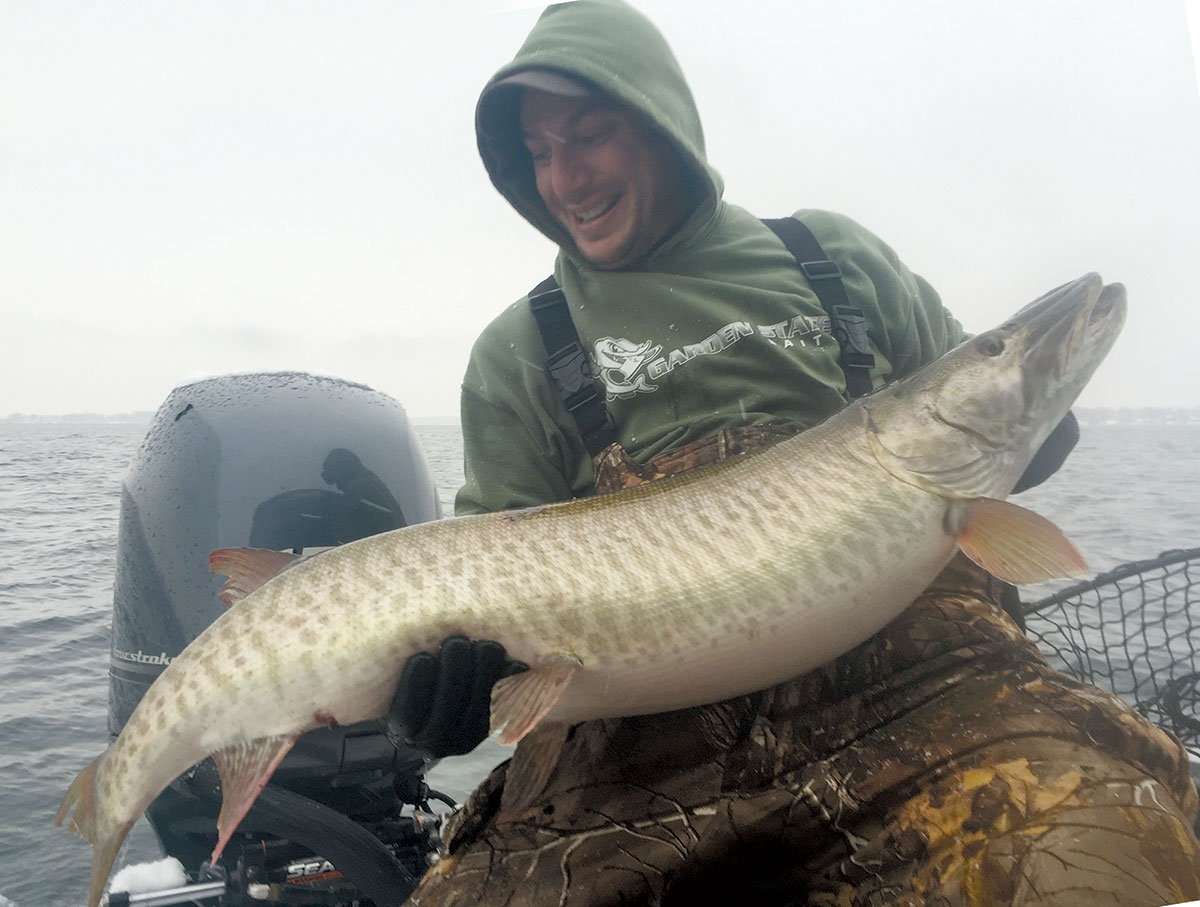
Lures Catch Fishermen
Early on in my musky career, someone told me not to get into the “lure craze.” I should’ve listened. Thousands of baits and who knows how many dollars later, I still use the same five baits to catch almost 95 percent of my fish. As musky gear can be costly enough to begin with, there’s no need to buy a hundred lures. A black, double-bladed spinner known as a “bucktail,” is the most effective bait in my arsenal, and catches most of my fish from May through September. A rubber, Musky Innovations “Bulldawg” is the second most essential bait on my list, followed by a large musky crankbait, a glider and a topwater.
Baits for trolling vary slightly, and almost all are some type of crankbait with a large lip. You don’t need to break the bank here either. A handful of trolling lures in different colors will help you cover different depths. Popular trolling baits include the Rapala Super Shad Rap, the Drifter Tackle Believer and the Legend Perch Bait.
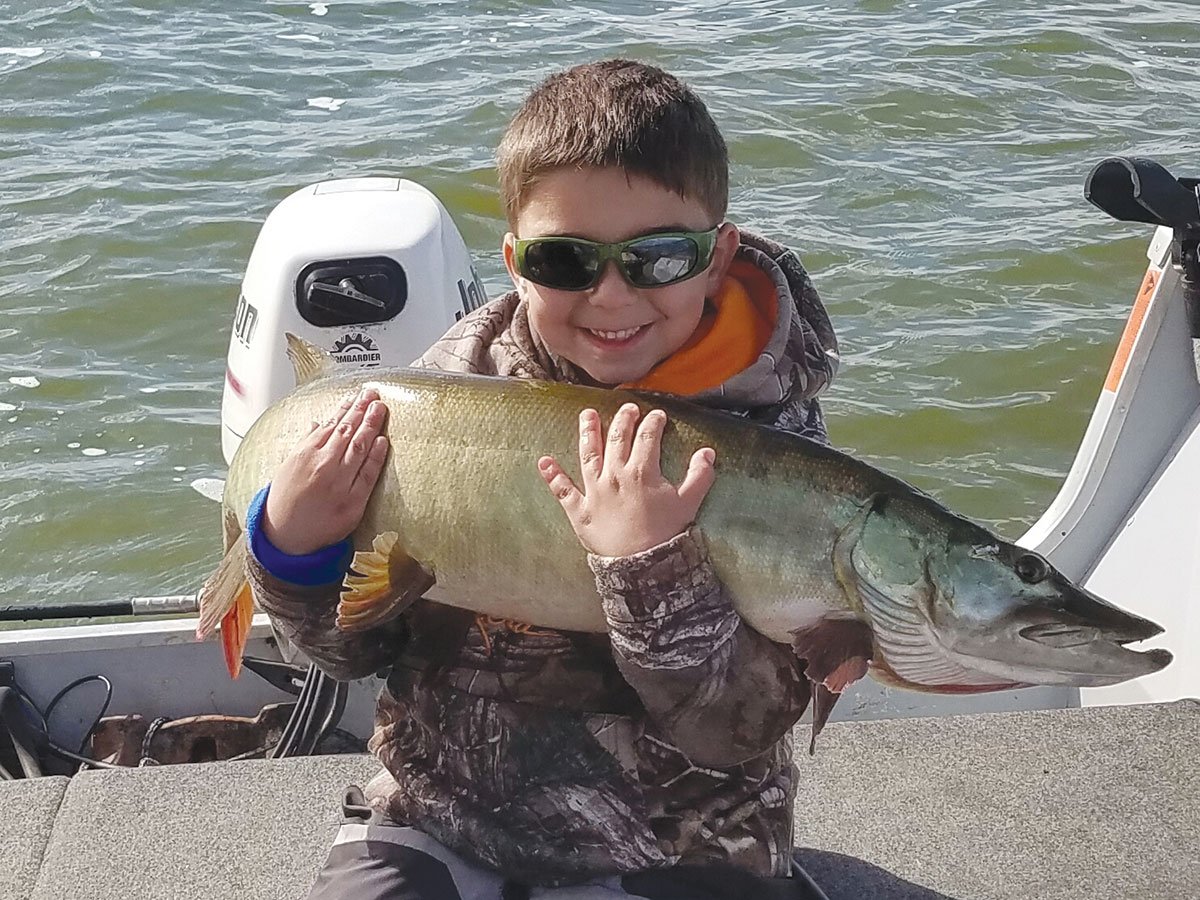
Getting It Done
Casting for musky almost always involves making contact with some type of structure. For our northern lakes, that structure is most likely going to be weeds, although some bodies of water offer timber or rocks to target.
Muskies often stay directly on the edge of the weeds, keeping the boat 15 to 20 feet off the weedline, and casting across it puts you in contact with fish. Earlier in the year, muskies often position themselves deeper in the emerging beds—casting over the top of them can be deadly.
Trolling for muskies generally improves after their spawn, which can be April in some regions and as late as June for others. If you plan on trolling, take note of the 15- to 25-foot areas of the lake that are situated on a drop-off or along a weed edge. These are the areas where you will contact the most muskies.
Trolling speeds vary from as slow as 2 to 3 mph in colder water to 6 to 7 mph when muskies are more active in the late spring and summer.
| Where To Go |
|---|
|
The St. Lawrence River, NY: The “Larry’s” reputation for pumping out huge fish is legendary. Most agree if there’s going to be a new world record, it’s going to come from the Larry. The St. Lawrence’s weed beds and weed edges can be fished spring and summer, but the most popular game here is trolling in the fall when fish are at their heaviest of the year. This is bigger water, so make sure to check weather and have a boat that can handle the conditions. Lake Chautauqua, NY: Chautauqua offers quality musky fishing for anglers who prefer to both cast and troll. Chautaqua takes its name from a Native American translation meaning “bag tied in the middle,” due to distinct northern and southern ends of the lake separated by a bottleneck. The Mayville Flats on the northern end of the lake is the place to be for the casting crowd, while those trolling bait routinely zig-zag the large flats on the south end of the lake. Lake Hopatcong, NJ: Thanks to the stocking efforts of NJ Fish and Wildlife, New Jersey has a number of quality musky fisheries. Hopatcong is at the top. New Jersey’s largest lake offers deep water, shallow coves, healthy weed beds and tons of forage for musky to thrive on. Casting the weedbeds in the shallow bays and coves produces fish for those tossing lures. Trollers should take note of the weedlines and steep breaks present on the main lake. The Allegheny River, PA: The picturesque Allegheny River is chock full of musky from the Kinzua Dam in Warren, PA to its confluence with the Monongahela in Pittsburgh. Upper reaches of the Allegheny are best suited for casters in jet boats or waders, whereas lower stretches open opportunities for prop boats and trolling. It’s worth noting the Allegheny often doesn’t freeze and remains fishable year-round. |
